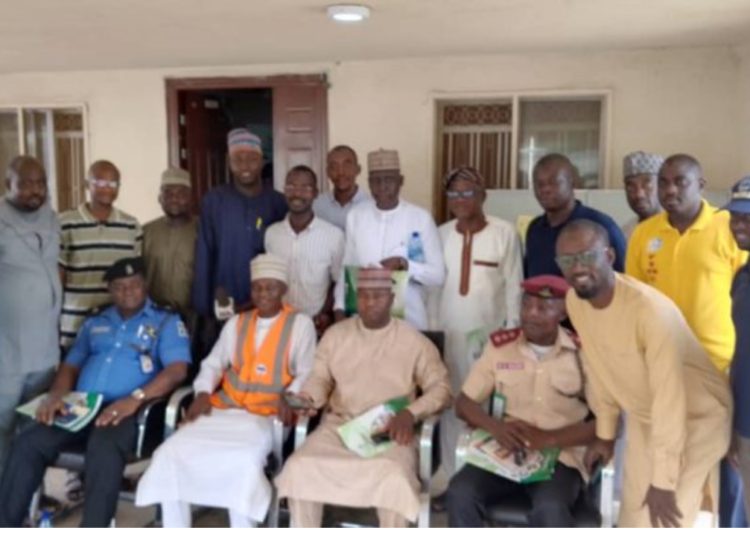The National Emergency Management Agency (NEMA), has kick-started closer-working relations with the media to enhance awareness and preparedness in disaster management in Sokoto State. This was at a meeting held with journalists and public relations officers (PROs) of the State Emergency Management Agency (SEMA), Nigerian Security and Civil Defence Corps (NSCDC), Sokoto Police Command, Red Cross Society, State and Federal Fire Services.
NEMA’s head, Sokoto zonal office, Aliyu Kafindangi, said the meeting was designed to foster collaboration and networking with media professionals and public relations practitioners as the goal of NEMA was to facilitate effective information dissemination for prevention and mitigation of disasters.
Kafindangi, who was represented by Yusuf Abubakar, said “the effort is to ensure timely and accurate dissemination of information for effective awareness creation to enable the communities to make informed decisions and take necessary precautions where applicable.
“The overall objective of the meeting is to provide a clear understanding of NEMA’s operations, Nigeria’s triple response structure and its relationship with emergency actors.”
In his presentation, NEMA’s information officer, Dahiru Kure, led participants in a discussion which focused on navigating challenges in reporting disasters, ethics in disaster reporting, balancing in sensational and responsible journalism as well as qualities needed for a good journalist covering disasters.
“Prior to disaster, journalists must be concerned with educating communities and promoting awareness among individuals about their civic duties to help prevent and mitigate the impact of disaster through special reports on disaster history in order to create a good consciousness of the disaster.
“When disaster strikes, affected communities need information on what has happened, what can be expected, where are the safe places, what survivors should do and what they should not do.
“After the disaster, the media should continue to provide information on different kinds of support provided by agencies and organisations, provide information to relief workers and provide opportunities for survivors to share information, experience,” he said.
Some common errors in reporting disasters are lack of journalistic passion to cover disaster issues, too much attention on bigger disasters to the detriment of smaller ones as well as exaggeration of figures.
The meeting also agreed that disaster management statistics are security statistics that must not cause greater harm.
In the event of disaster, the media is expected to educate, guide, evaluate disaster management machinery, set agenda and prevent rumour and manage panicky situations. The media is also expected to facilitate law and order, appeal for donor/resource mobilisation.
Journalists also need to be calm, learn fast and not panic, collaborate with emergency agencies, treat interviewees with respect and sensibility and investigate to find out the cause of the disaster.
With predicted unusual heavy downpour expected in several states, the state emergency management agency, SEMA, is not leaving anything to chance in preparation to curtail and mitigate perennial flooding synonymous with the state.
Though rain has been falling heavily, no life has been lost to flooding in Sokoto State this year, except for a few instances of farmlands/crops destroyed particularly in three local government areas.
Mostly affected are Goronyo/Kwakwaso, Tara/Gandi and Aliyu Jodi/Gobirawa areas in Goronyo, Rabah and Sokoto South local government areas.
At a one-day Disaster Reduction and Social Safety (DraSS) stakeholders’ meeting themed, “improved early warning systems and social safety nets for rapid disaster response in North West Nigeria,” the director-general, State Emergency Management Agency, Alhaji Ukashatu Muhammad, disclosed how the state was able to mitigate perennial flooding usually associated with the state.
“We held meetings to foster unity among disaster management agencies/stakeholders to manage occurrences in the state.
“We also held deliberations, discussions and advocacy on how to avoid flooding in areas predicted by NIMET,” he said.
The meeting was at the instance of Cooperazione Internationale and Christian Aid funded by the European Union Civil Protection and Humanitarian Aid.
Emphasising that personal safety should be top priority during the rainy season and potential flooding situations, the director-general advised that residents of flood-prone areas should follow the instructions of local authorities and be prepared to take action if necessary.
“People should pay attention to weather forecasts, updates, and warnings from local authorities; drainage systems should be clean and free from any blockages.
“Consider installing flood barriers or sandbags in vulnerable areas to divert water away from your property. Familiarise yourself with evacuation routes and have a plan in place in case you need to leave your home quickly. Identify higher ground or designated evacuation shelters in your area.
“Avoid walking or driving through floodwaters: Never attempt to walk or drive through flooded areas, as water levels can be deceivingly deep and fast-moving,” he maintained.
w











